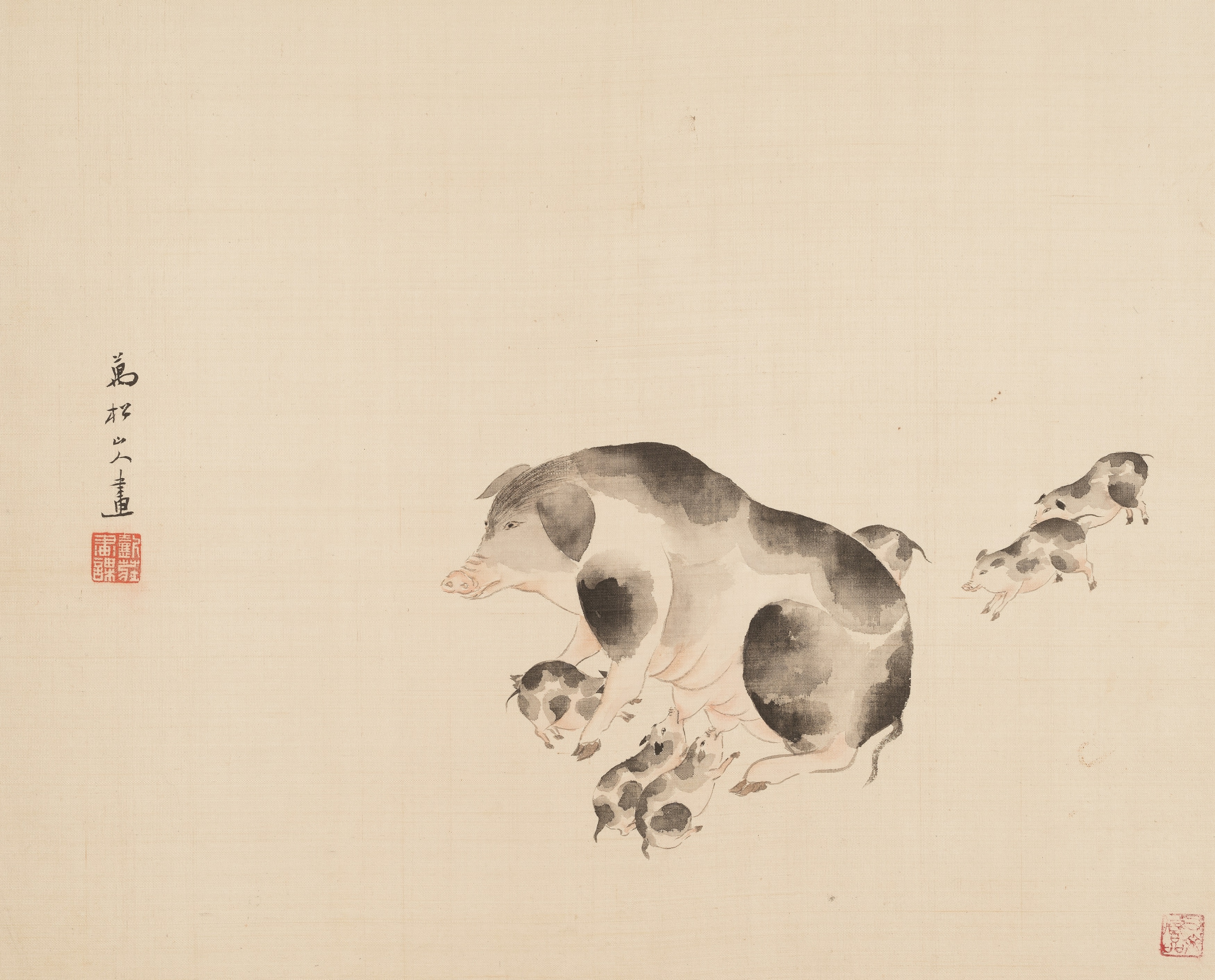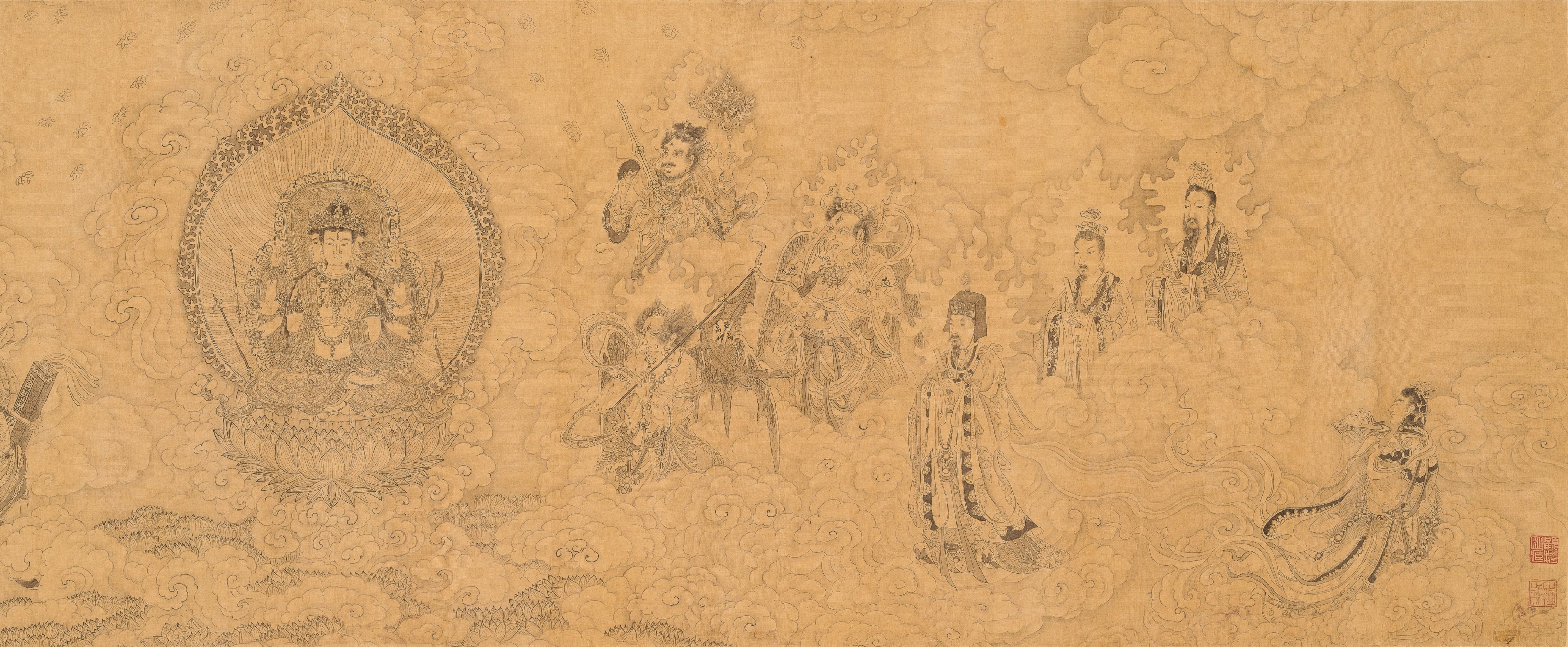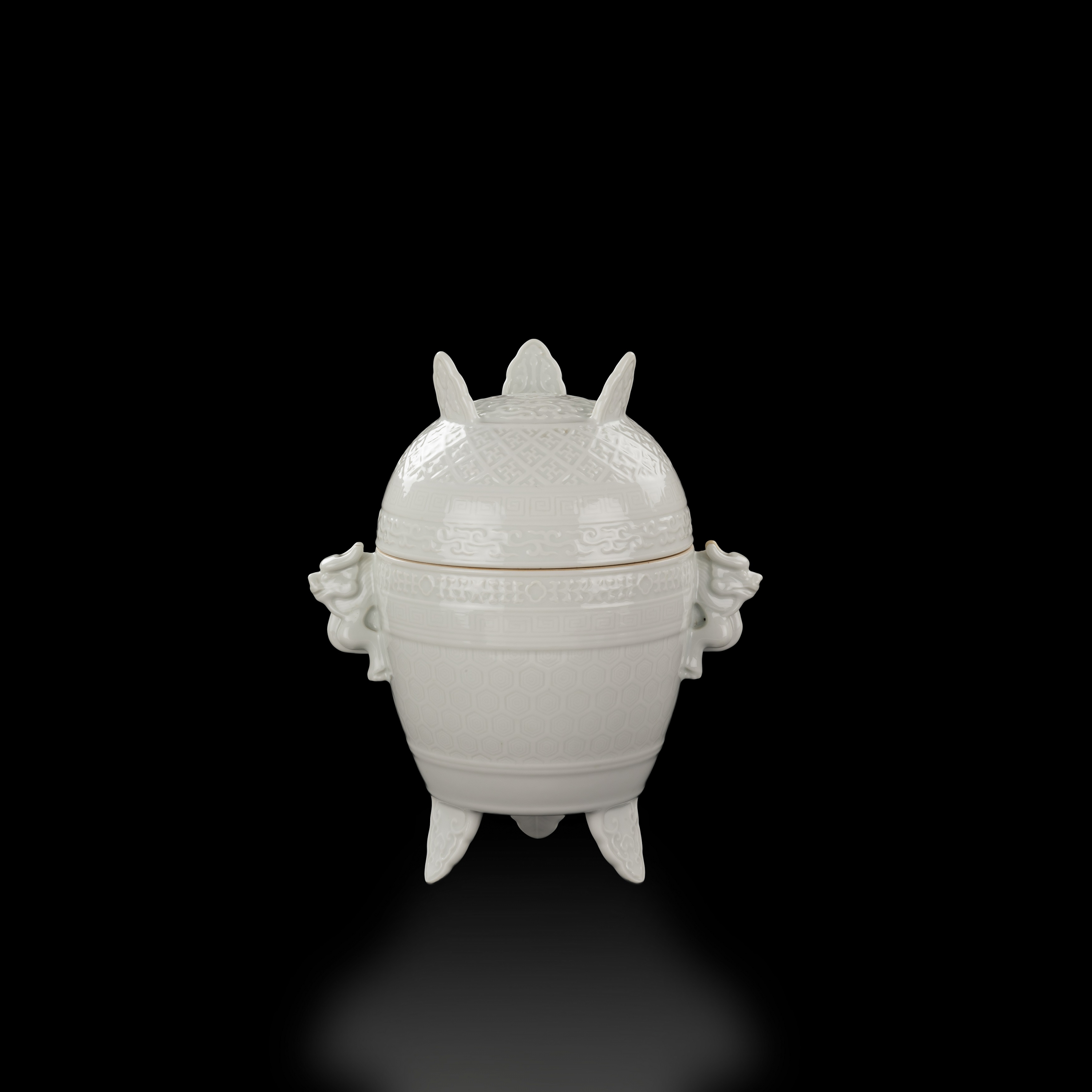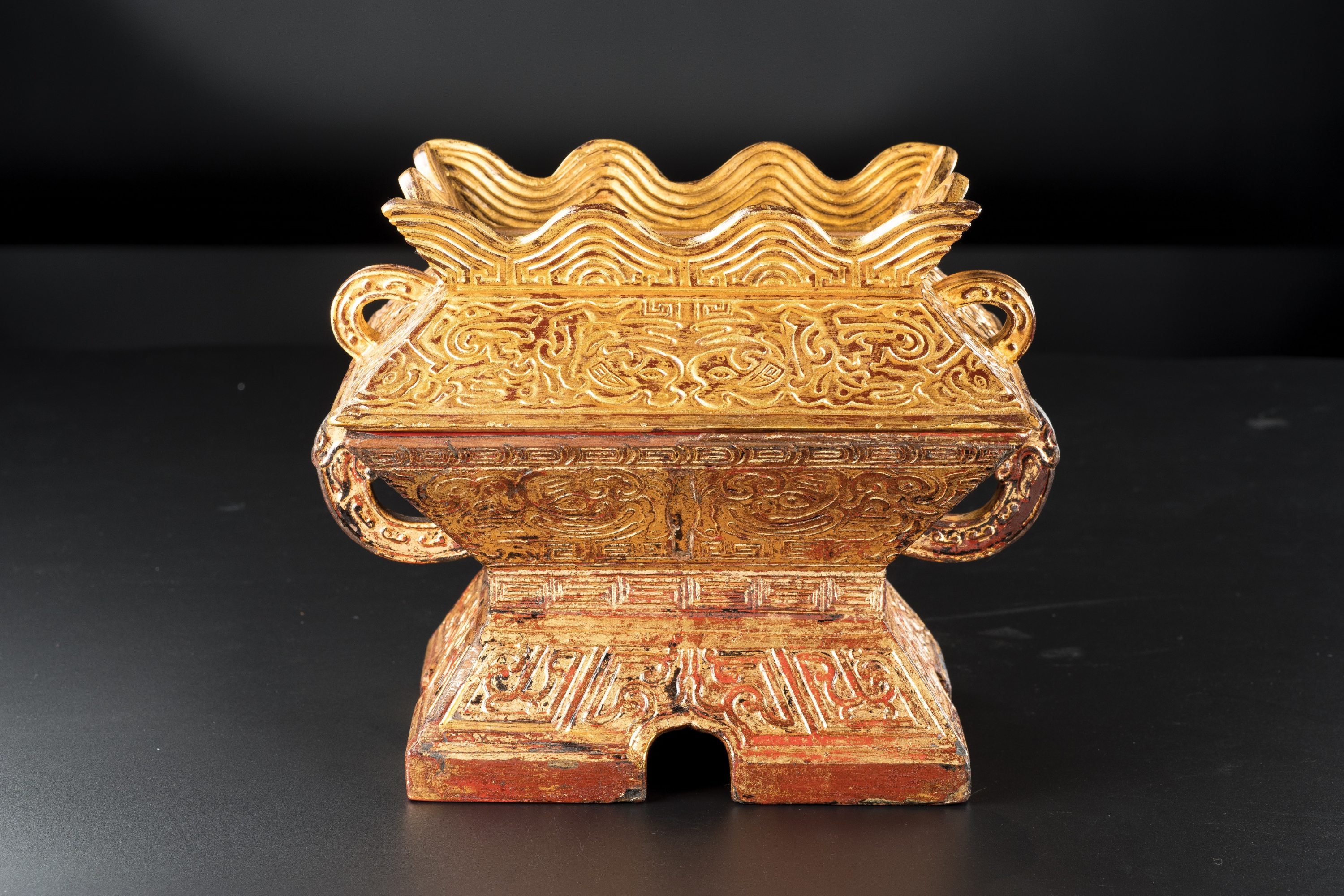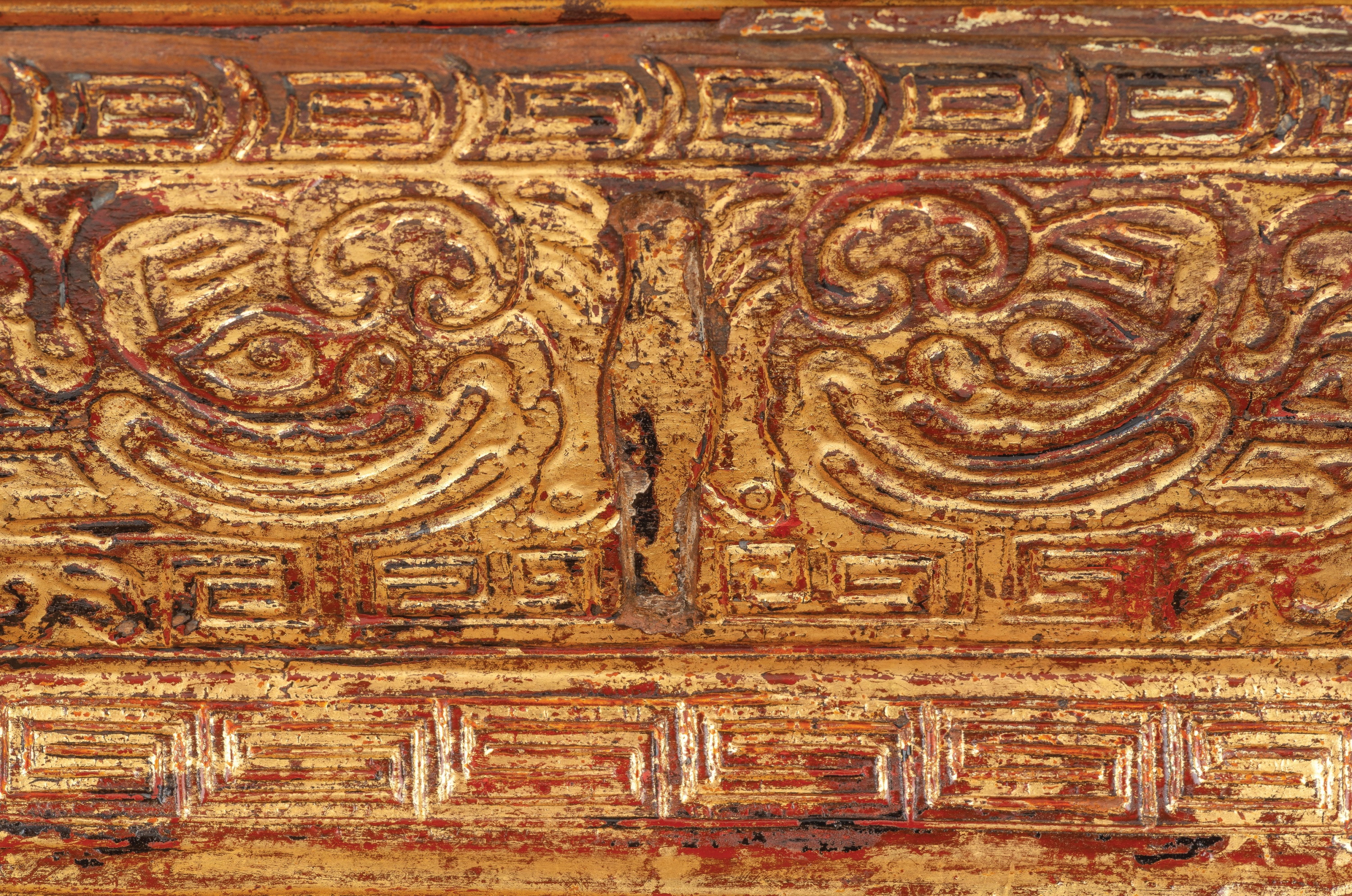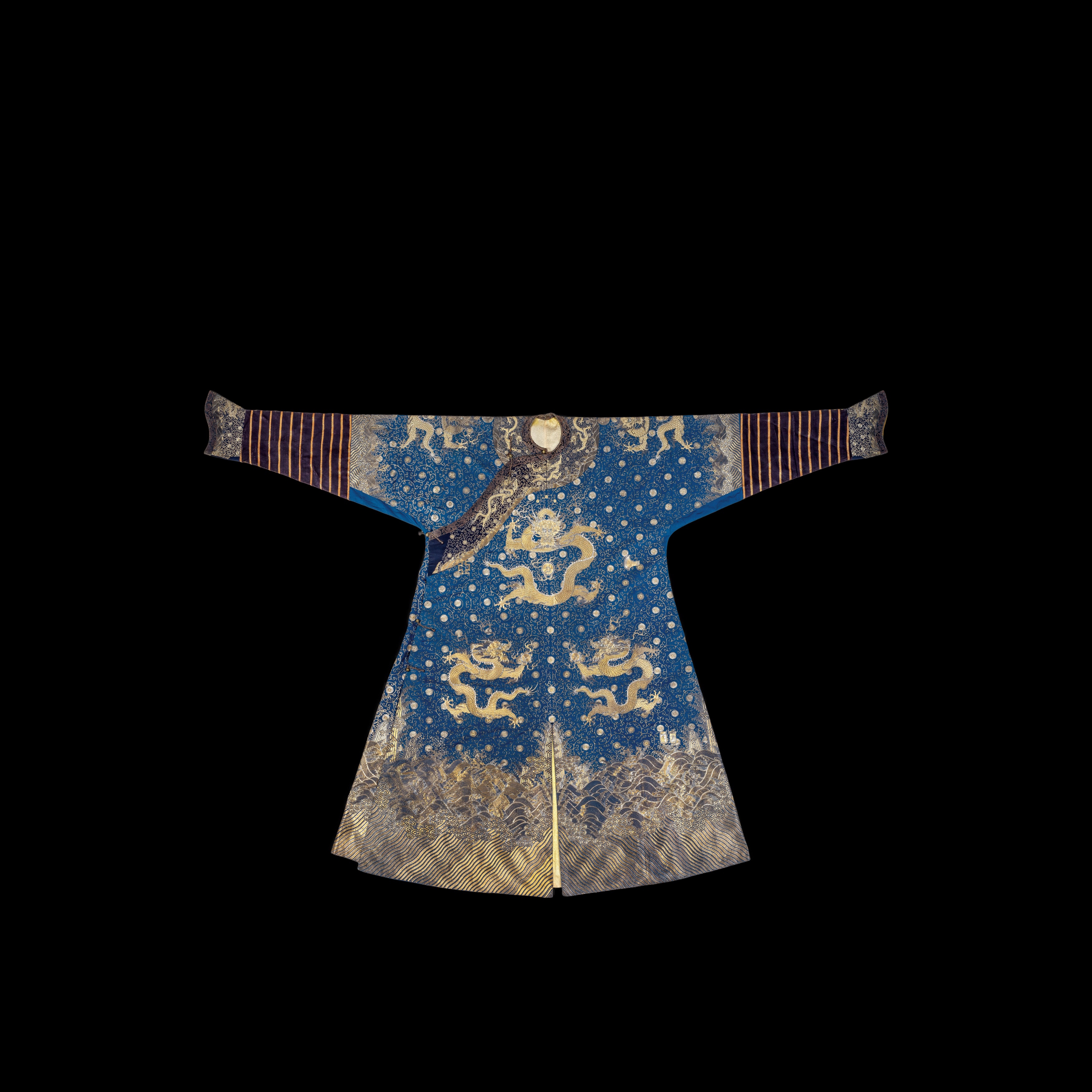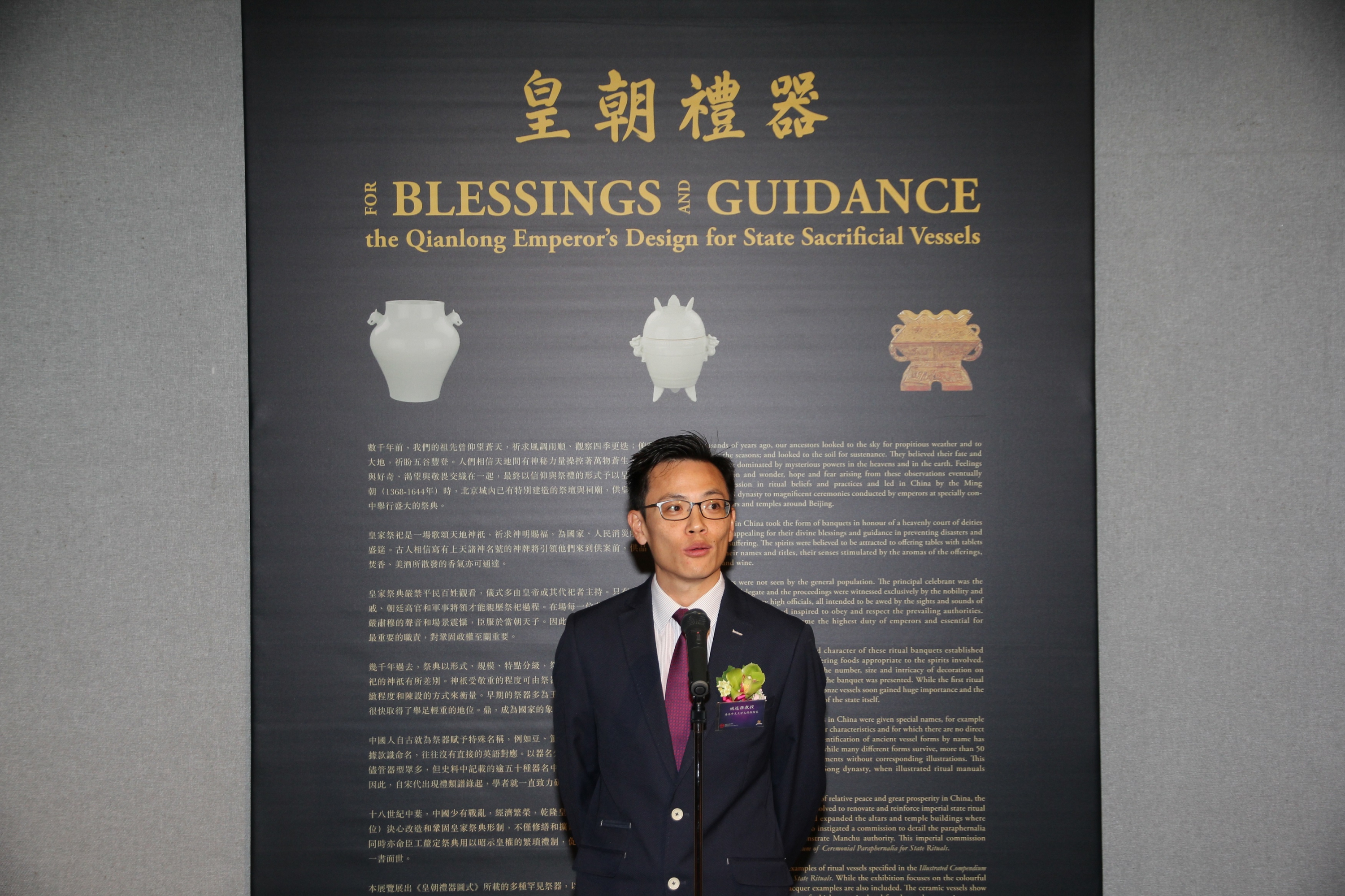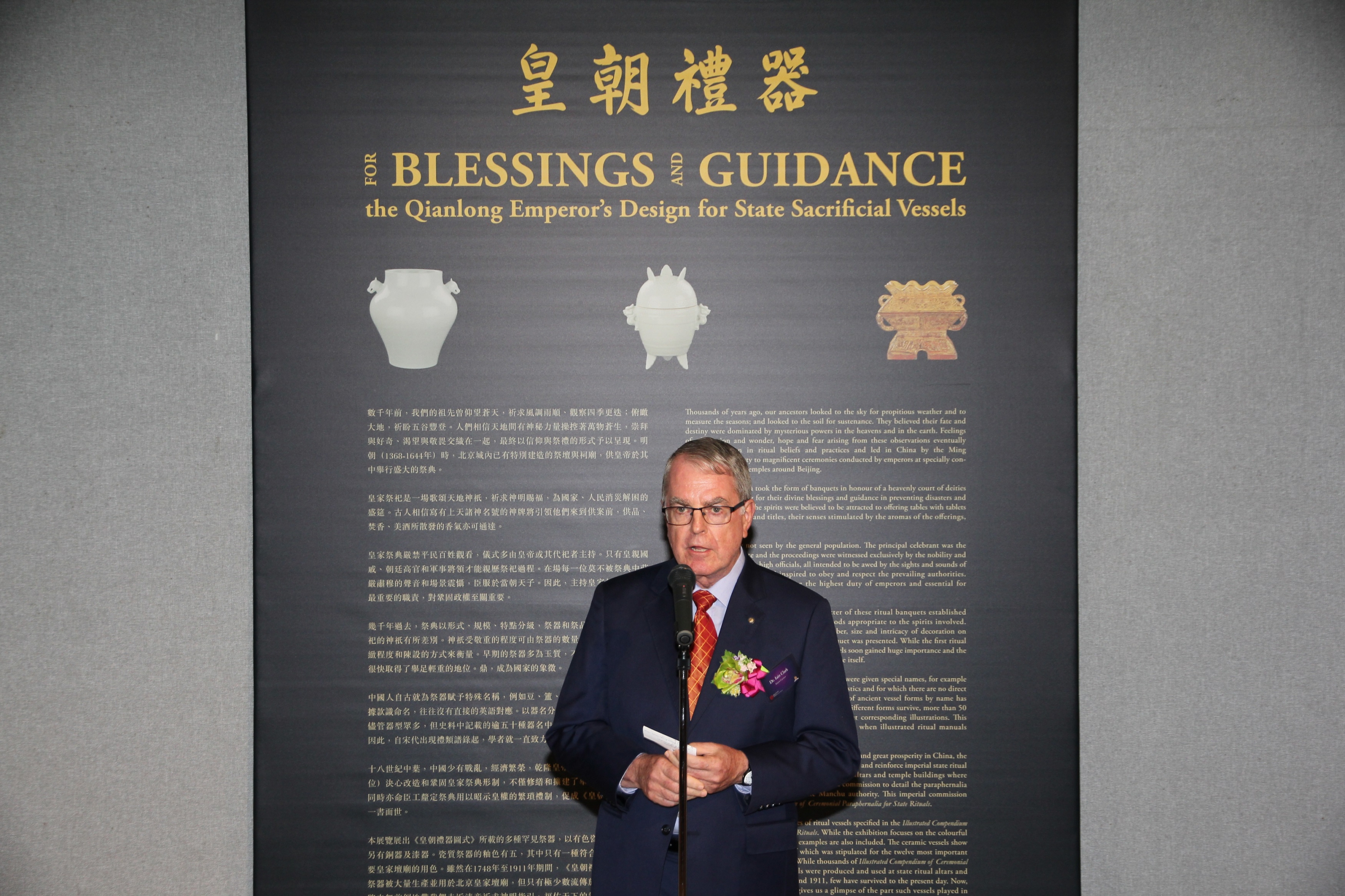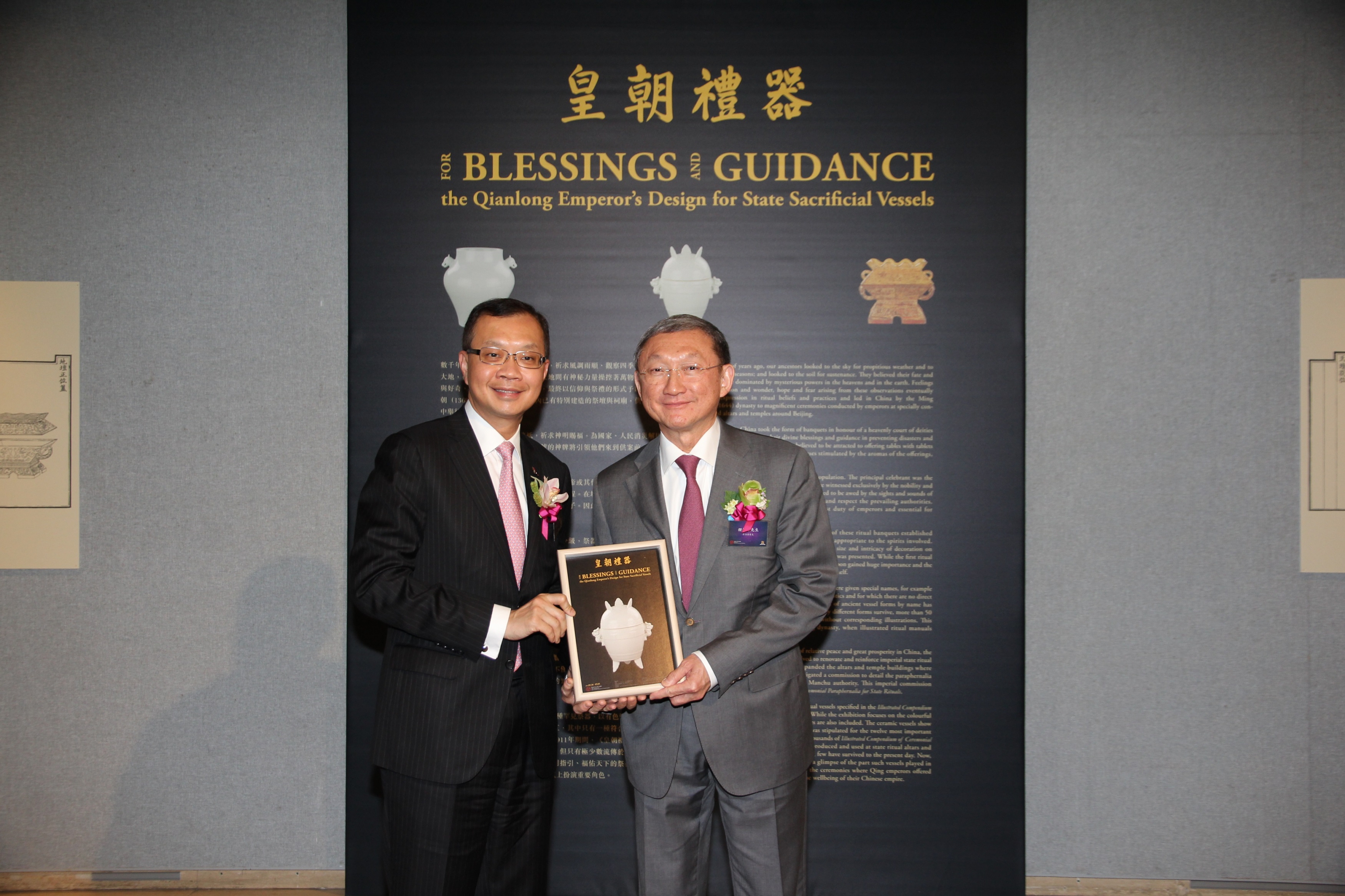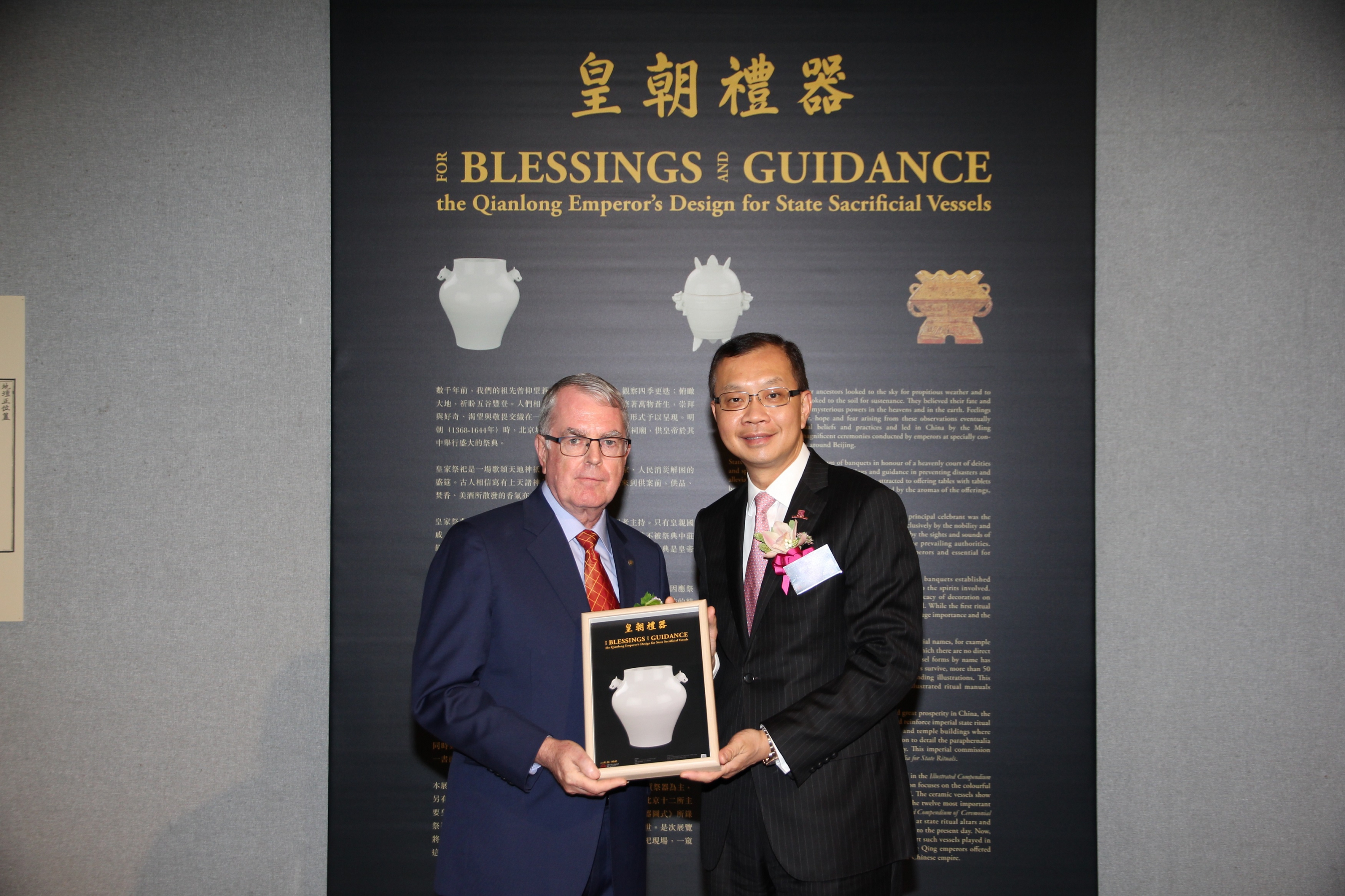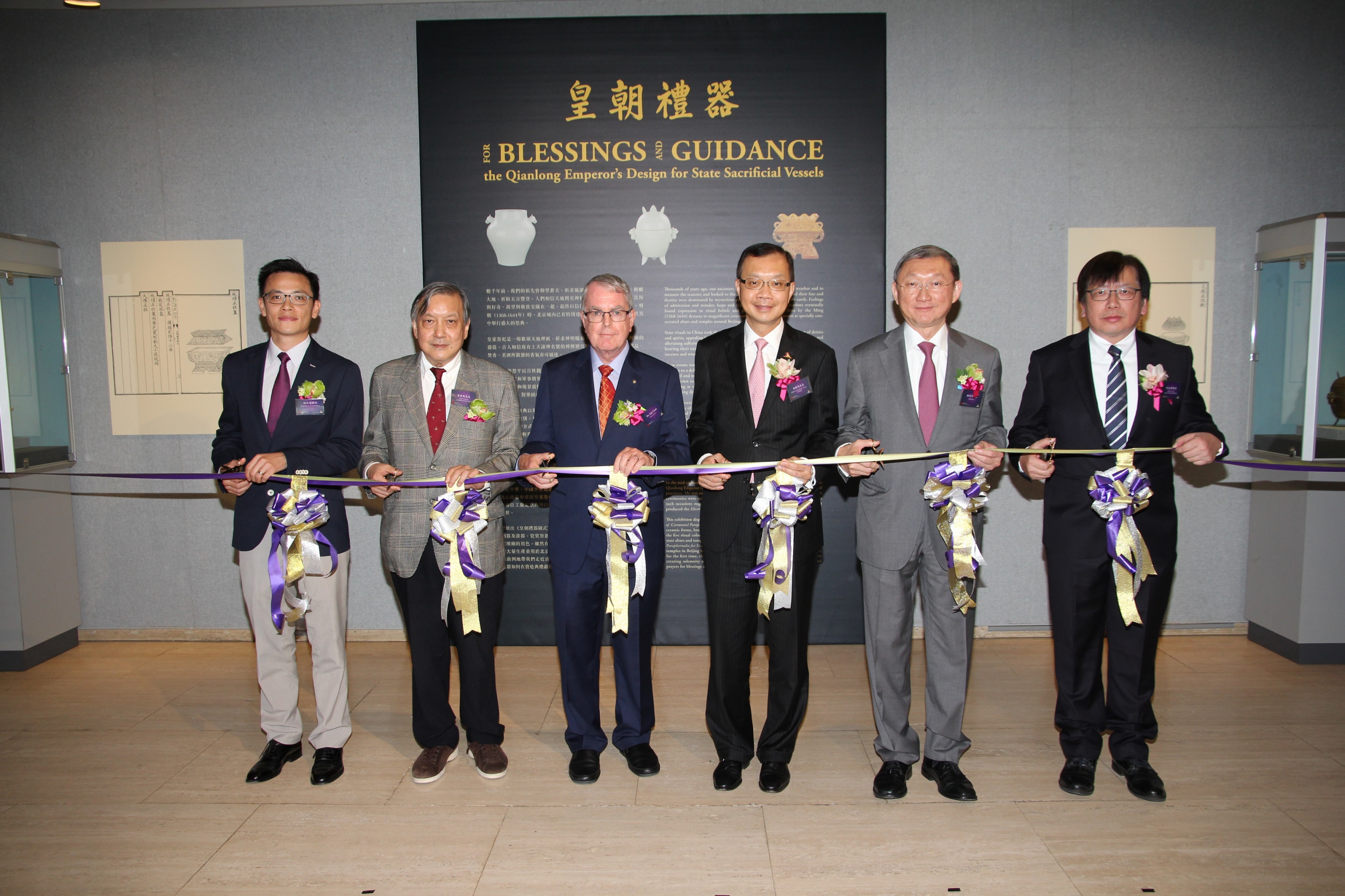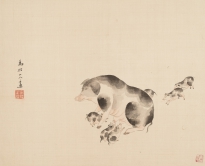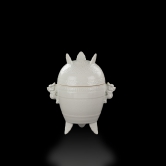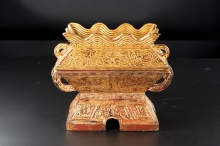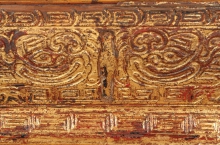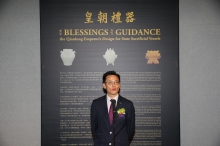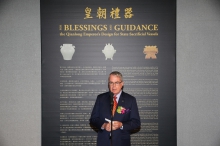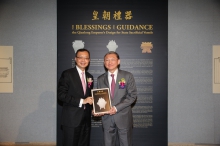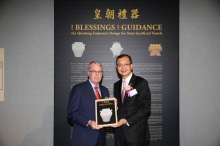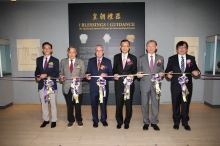CUHK
News Centre
Double Happiness on the Celebration of the Chinese New Year CUHK Art Museum Presents Exhibitions of Ritual Vessels in Qing Times and Pig Artifacts
To celebrate the arrival of the Year of the Pig, the Art Museum of The Chinese University of Hong Kong (CUHK) will present two exhibitions, For Blessings and Guidance: the Qianlong Emperor’s Design for State Sacrificial Vessels and A Fat Year to Come: Celebrating the Year of the Pig, from 26 January to 5 May 2019, with over 60 items on Qing ritual vessels, a Blue silk dragon robe, and more than 20 pig artifacts. Admission is free and all are welcome.
The opening ceremony of the exhibition For Blessings and Guidance was held today (25 January). The officiating guests included Dr. Iain Clark, Guest Curator; Mr. Anthony K. W. Cheung, Master of Huaihaitang, Mr. Eric S.P. Ng, Vice-President of CUHK; Prof. Ho Che-wah, Acting Director of the Institute of Chinese Studies, CUHK; Mr. Christopher Mok, Chairman of the Advisory Committee of the Art Museum, CUHK and Prof. Yiu Chun-chong, Josh, Director of the Art Museum, CUHK.
A Fat Year to Come: Celebrating the Year of the Pig
Pigs are among the earliest domesticated animals. They have played an essential role in agricultural China as food and goods, and also left traces in history and culture with stories and tales, such as Pig-head Monk, and Zhu Bajie in Journey to the West, with countless artifacts related to these characters. 2019 is the Year of the Pig according to the Chinese calendar. More than 20 pig artifacts from the collection of the Art Museum as well as local collectors will be showcased in this special exhibition to celebrate the festive occasion.
For Blessings and Guidance: the Qianlong Emperor’s Design for State Sacrificial Vessels
For centuries, imperial rituals had been an integral part of Chinese society, often serving to legitimise the emperor’s ‘Mandate of Heaven’. The Qianlong emperor of the Qing dynasty resolved to standardise and reinforce imperial state ritual practices. He not only restored and expanded the altars and temple buildings where ceremonies were conducted, he also instigated a commission to detail the paraphernalia such occasions required to demonstrate Manchu authority. This imperial commission produced the Illustrated Compendium of Ceremonial Paraphernalia for State Rituals (shortened hereinafter as Illustrated Regulations). The Illustrated Regulations, under the personal direction of the Qianlong emperor, documents ritual utensils and vessels, formal dresses, jewelries, musical instruments, weapons, insignia, summaries of the altars and temples at which state ritual was conducted, the quantity of each ritual vessel form required at each location and other paraphernalia necessary for the highly complex imperial state ritual practice, in approximately 1,300 coloured illustrations with accompanying text.
In stark contrast to sumptuous Qing court art, Qing ritual vessels were made primarily of glazed porcelains after ancient bronzes. The Illustrated Regulations describes eight main types of Qing imperial ceramic vessel for state rituals, with each type varying in size and intricacy of decoration. The form, scale and character of Qing ritual banquets established hierarchies of special vessels in terms of quantity and glazed colour, offering foods appropriate to the altars and temples involved. The archaistic Qing vessels were arranged symmetrically and filled with a wide range of prescribed foodstuffs, thereby enhancing the solemn atmosphere and ensuring the proper execution of the rites. As such, these objects were of utmost significance in activating state rituals during the Qing period.
With the generous donations of Qing ritual vessels by Dr. Iain Clark and Mr. Anthony K. W. Cheung, the Art Museum has not only enriched its collection but can also boast the largest repository of Qing ritual vessels outside of the Palace Museum. The exhibition showcases over 60 items of Qing ritual vessels and a Blue silk dragon robe, Jifu. The ritual vessels displayed are rare examples of ritual vessels specified in the Illustrated Regulations. While the exhibition focuses on the colourful ceramic forms, bronze and lacquer examples are also included. While thousands of The Illustrated Regulations vessels were produced and used at state ritual altars and temples in Beijing between 1748 and 1911, few have survived to the present day. Now, for the first time, this exhibition gives us a glimpse of the part such vessels played in creating solemnity and magnificence for the ceremonies where Qing emperors offered prayers for blessings and guidance, and the wellbeing of their Chinese empire.
To raise public awareness of Qing ritual vessels, the Art Museum has published the accompanying catalogue For Blessings and Guidance: the Qianlong Emperor’s Design for State Sacrificial Vessels, written by Dr. Iain Clark, with plates and illustrations of various ritual vessels. The Art Museum will organise a keynote speech and symposium, inviting Dr. Clark and experts from mainland China and Taiwan to share their valuable study and research on the subject. Admission is free. Seats are available on a first-come, first-served basis. In addition, engaging interpretations and games have been developed to give pleasure and important information when visitors come to appreciate the exhibition.
Details of the exhibitions are as follows:
|
Date: |
26 January 2019 – 5 May 2019 |
|
Venue: |
Gallery I, Art Museum, CUHK |
|
Opening Hours: |
Mondays to Wednesdays, Fridays and Saturdays: 10:00 a.m. – 5:00 p.m. |
|
Closed on: |
Every Thursdays, February 4 – 7 (Lunar New Year’s Eve and New Year Public Holidays) and April 19 – 22, 2019 (Easter Holidays) |
|
Enquiries: |
3943-7416 |
Mr. Eric S.P. Ng, Vice-President of CUHK presents souvenir to Mr. Anthony K. W. Cheung, Master of Huaihaitang
(From left) Prof. Yiu Chun-chong, Josh, Director of the Art Museum, CUHK; Mr. Christopher Mok, Chairman of the Advisory Committee of the Art Museum, CUHK; Dr. Iain Clark, Guest Curator; Mr. Eric S.P. Ng, Vice-President of CUHK; Mr. Anthony K. W. Cheung, Master of Huaihaitang and Prof. Ho Che-wah, Acting Director of the Institute of Chinese Studies, CUHK.


